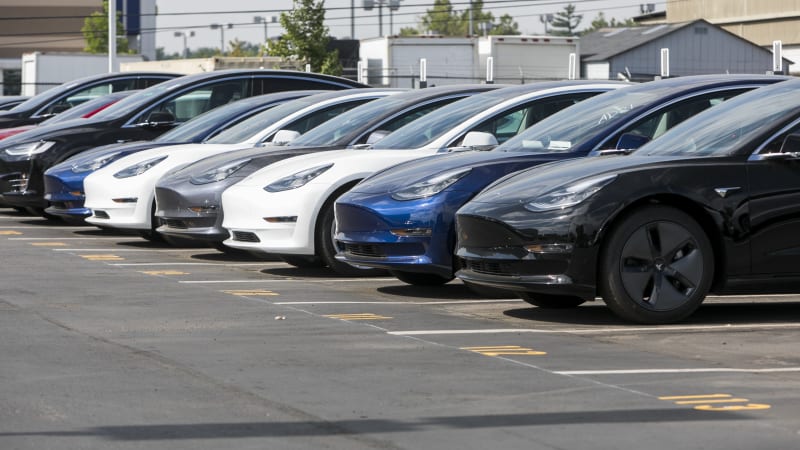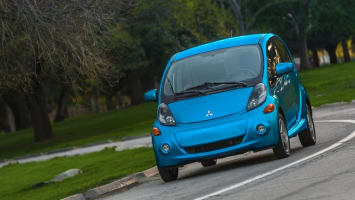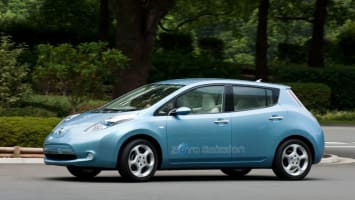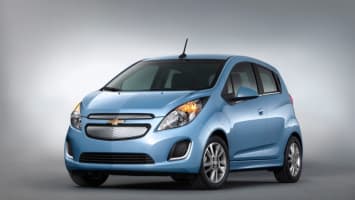When it's time to buy a car, it certainly doesn't hurt to be a professional car reviewer. But when I decided to buy a 2018 Nissan Leaf as a family car and second vehicle, I found out that there's a steep learning curve. In this multi-part series, I share with you what I learned, to help you determine if an EV is right for you. In this installment, we discuss how an EV's range should factor into your decision. You can read the first installment: "Grappling with the dark side of EVs."
Here's the truth: EVs aren't for everybody. Whether its their considerable cost — we're talking about economy hatchbacks that are close to $30k even after federal incentives — or practical concerns ("Where am I going to charge this thing?"), it requires a different mentality than just buying a Toyota Corolla. And the thing that weighs heaviest on many potential EV buyers is range.
It doesn't help public perception that the first wave of EVs had pitiful range figures, inadequate for any sort of peace of mind. "Range anxiety" became a buzzword. But range is improving each year. Even in the few months since I bought my Leaf, there are longer-range options coming to market, like the Leaf Plus, Hyundai Kona Electric and Kia Niro EV. Whatever the "must-have" range number is for you, these 200-mile-plus capable EVs are probably closer to the target.
But I'm not saying that you should just buy a 200+ mile range EV impulsively. It may be that a much cheaper, much more environmentally friendly shorter-range EV (or even a plug-in hybrid) will fit your bill perfectly. But before we get to that, it's worth taking a few minutes to think about all the factors that affect range.

One is the weather. Take extreme cold, which saps practical range — Wired has a great article that details how cold hurts regenerative braking, charging, and so forth. Heat induces stress on batteries, shortening their life, especially air-cooled units like those found in the Nissan Leaf. So too can fast-charging, which can accelerate battery degradation. If you live in the desert Southwest and want to fast-charge frequently for long trips, you may want to consider how those two factors may affect your battery life and practical range. The Leaf (infamously) reduces fast-charging speed after several charges to keep the battery healthy — it's a feature, not a bug, but it's one that may affect how you were planning on using it.
On that note, I think that counting on regular fast-charging is not a great strategy. It's sort of like an emergency spare tire, a donut — it'll get you where you need to go if something happens, but you don't want to do it all the time. When you consider range, it's prudent to just think about what you can do using Level 2 charging at home or at your destination on a regular basis.
In many places, open public Level 2 chargers can be really hard to find. Certain parts of Southern California are like that, where there are long waits for open chargers. If you're counting on that public charger juice, someone camping out at a charger can ruin the trip. Until a better infrastructure solution crops up, my advice is to not count on any juice but the chargers at home or work. Everything else should be supplemental. And that means you should plan on leaving the house with enough juice to get you where you need to go.

Given all that, how can you figure out how much range is enough for what you want to do? Do what we did: Look carefully at how you use your current car. Really carefully. We used Google Maps to plot out common routes the old car — a 2012 Mazda3 — took. We thought about the longest trips that car took from home in the past three years. We even looked at the yearly mileage to calculate how many miles we traveled in a day, on average. In the past three years, the Mazda had never taken a trip that was further than a 50-mile radius from our house. In our situation, an EV is a perfect one-to-one replacement for the Mazda. In fact, most days it won't be driven enough to require even topping up. The 2018 Leaf's 40-kWh battery's 150-mile maximum range gives us a buffer even for those rare longer trips. Heck, even at 80 percent full — about 120 miles range, which is what we usually charge it to — we have plenty of wiggle room.
The old Leaf, with a 24 kWh (84 miles range) or 30 kWh (107 miles) battery, would have worked, but the smaller buffer would have required charging every single night, more frequent charging to 100% (which takes longer and stresses the battery), and more strategic thinking about route planning for every new destination. For our carefully-considered situation, there were too many negatives. That extra 10 kWh worth of range removed a lot of the psychological hurdles to going EV.
Now, we live in a dense suburban area. I am lucky enough to own my house, I have a garage that I had a Level 2 charger installed in, and everything we need is nearby (including fast- and Level 2 charging stations, if needed). I also am lucky enough to have a couple other gas-powered cars — they're not that new or nice, but in a pinch one can be pressed into duty for an impromptu road trip or the like. That's partially why the usage for the Mazda looked like it did. My family is the ideal candidate for an EV, since our Leaf's range is sufficient AND we aren't relying on it solely every single day.

Ah, you might say, well if range is a problem, why not get a used Tesla instead of a newer, shorter-range Leaf? I'll admit we toyed with the idea, and there were a few old Model Ss in our price range — the crustiest, sketchiest examples around, no doubt. But range isn't the only thing we needed. The Model S is huge, with an enormous battery pack, and while the big battery allows for long range, it also comes with additional hidden "costs" — the energy and emissions needed to manufacture the battery, longer charge times, and the additional energy needed to move the big Tesla around. All things considered, our shorter-range Leaf is much more efficient over its lifecycle — and we didn't need the additional size, range, or heft of a Tesla.
You see, with EVs, it's all about right-sizing. To maximize all the benefits, you need to buy the least vehicle you need. The smallest battery, the lowest practicable range. Having a huge, unnecessary battery capacity cushion is basically a liability on all the short trips.
The point is, be realistic. Everyone seems to use the "road trip" excuse to rule out an EV, but is the EV really going to be the only vehicle available for the 800-mile road trip that you almost never take? Buying a vehicle to satisfy a rare, unusual condition just does you a disservice. Let's say you're really going to do a few long trips each year: A plug-in hybrid might be an excellent way to get the best of both worlds. Well, if they're plugged in regularly for short commutes, they're functionally EVs. Not the most efficient, considering they're hauling around a heavy gas motor all the time, but generally superior to a traditional hybrid. And on the rare long trip, they get exceptional range, minimizing unplanned pit stops to fill up. If an EV truly won't work for you, consider a PHEV before abandoning the idea of plugging in altogether. Or just rent a car for that vacation trip.




Those EV buyers who can live with even less of a cushion can really come out on top. Those first-generation Leafs (and i-MiEVs, Spark EVs, Focus Electrics, etc.) are incredibly cheap thanks to jaw-dropping depreciation, and as used cars all the energy and emissions used to build them already happened. That menas every additional mile they're used makes that much more of a difference, and the break-even point on fuel savings comes super quick. And the break-even on emissions from producing the battery has already happened.
The bottom line: If you can live with a sub-100-mile range, you can get into the EV world for pennies on the dollar. If my wife had access to a charging station at work, our entire calculus would have changed, and there'd almost certainly be a first-generation Leaf sitting in our garage right now. That said, the second-generation Leaf fit our bill perfectly.


Sign in to post
Please sign in to leave a comment.
Continue